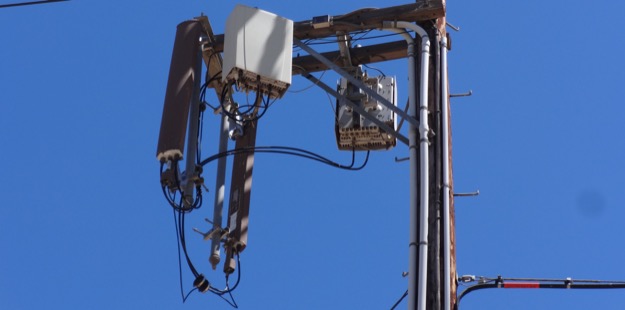
It’s a small change, but one that might speed up mobile broadband deployment in California. Wireline telephone companies can now install pretty much any kind of wireless equipment on utility poles, thanks to a decision by the California Public Utilities Commission.
The primary beneficiary will be mobile infrastructure companies – Crown Castle, Wave, Extenet for example – that build cell sites, large and small, and operate them for licensed mobile carriers, such as AT&T, Verizon and whatever T-Mobile and Sprint eventually become. A couple years ago, the CPUC allowed mobile carriers to attach cellular equipment to utility poles under the same, open-to-all rules that apply to wireline telcos and electric companies. The only difference is that wireless companies have to pay pole owners more, because they take up more space.
But that 2016 ruling only applied to federally licensed mobile carriers. The infrastructure companies that serve them operate under wireline rules – they are competitive local exchange carriers (CLECs) blessed by the CPUC. So they couldn’t demand the same kind of access.
Now they can.
There were, and still are, workarounds. One-on-one deals can be done and paperwork can be – expensively – shuffled to make it look like the licensed mobile carrier is doing the work. But that can mean delays and extra costs, with no practical benefit to the companies involved or the public.
Not everything is fair game, though. There’s a particular set of rules that govern utility poles, which are typically made out of wood and shared by electric, telephone and cable companies. Those rules don’t completely preclude local permits and don’t apply to other vertical assets in the public right of way, such as street light poles – cities that own them can still negotiate fair market leases. Nor do they apply to 120-foot steel masts, such as those proposed by Mobilitie, another infrastructure company that has tried to play fast and loose with right of way privileges.
